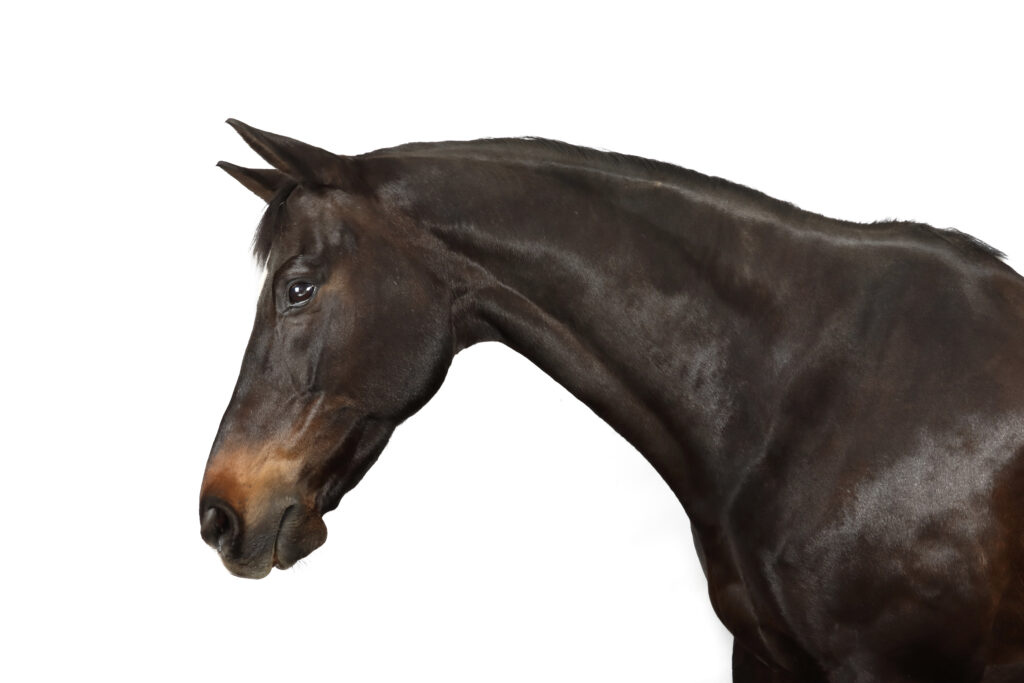
Equine practitioners are performing neck radiographs with increasing frequency as neck structures become less mysterious. Unlike in years past, many horse owners now expect veterinarians to identify abnormalities on radiographs, not just computed tomography.
“The standard of care is changing, and owners have a greater expectation of what veterinarians can do in the field,” said Natasha Werpy, DVM, Dipl. ACVR, of Equine Diagnostic Imaging, in Archer, Florida, during her presentation at the 2023 American Association of Equine Practitioners Convention, held Nov. 29 to Dec. 3 in San Diego.
Radiographic examinations, however, must be performed with a thorough knowledge of imaging techniques and cervical spine anatomy.
Reviewing the Anatomy
A complete radiographic study of the cervical spine often extends from the caudal skull to either the seventh cervical vertebra (C7) or first thoracic vertebra (T1).
“Lateral views are considered part of the standard examination, and sometimes oblique views are taken, depending on the situation,” said Werpy.
She pointed out a few important features of the neck. For example, the transverse C2 processes can be superimposed over the intervertebral foramen, the vertebral bodies of C3 through C5 appear similar, and C6 has caudoventral tubercles. Finally, C7 has transverse processes that can create linear regions of opacity on the vertebral body. The dorsal process of C7 has a lot of normal variability, Werpy said, adding that this dorsal spinous process is superimposed over the C6-C7 articular processes and is sometimes mistaken for degenerative joint disease of the articular processes.
“These are all normal anatomic features that will help you figure out where you are in the neck, especially if you’re using small plates and are only getting a few vertebrae on each plate,” she said. “It is particularly difficult for imaging C3 to C5; you need to add markers to distinguish them.”
Radiographic Technique and Positioning
Does your radiograph have good technique?
“There needs to be good trabecular bone showing in C6 and dense (cortical) bone of C7,” Werpy explained. “We also need to evaluate bony alignment and look for kyphosis (flexion of the vertebral canal). Different from subluxation, kyphosis can be due to the head being lowered because of sedation.
“The person holding the horse is the most important person in the room,” she added. “In the case of kyphosis, change the horse’s head and neck position to determine if it is positional or not. When possible, it is beneficial to have the head and neck in a neutral position, especially for prepurchase radiographs.”
To further assess positioning, look at the transverse processes.
“If something looks abnormal at the edge of the film, take another image with the questionable location in the center of the film to help eliminate artifacts,” Werpy said.
To improve C6 and C7 images, pull one of the front legs back and put the plate on that side of the horse.
“This moves the musculature out of the way, making a huge difference in the quality of the radiograph,” Werpy said. “This also allows you to see C7 and T1 better, where a lot of important abnormalities can be found.”
Some situations might call for oblique radiographs. These can help identify periarticular remodeling and osseous cystlike lesions.
“Obliques can also be used to better identify unilateral articular process enlargement and in certain cases can highlight ventral articular process enlargement, which can cause intervertebral foraminal narrowing,” she added.
But obliques don’t always help with articular process enlargement because the location of the enlargement might not be evident, even on oblique views.
Lateral and oblique views are, however, very helpful for identifying cranial C3 articular process malformation.
Summary
When answering the question, “Is this a good neck radiograph?” Werpy advises looking to see if the head and neck are positioned properly and the radiographic technique is appropriate.
“We should be able to distinguish trabecular bone from subchondral bone and identify specific anatomic features of the individual vertebrae,” Werpy advised.
Importantly, know and document your limitations when interpreting neck radiographs, and communicate with clients so they understand the limitations. Seek advanced imaging when indicated.








